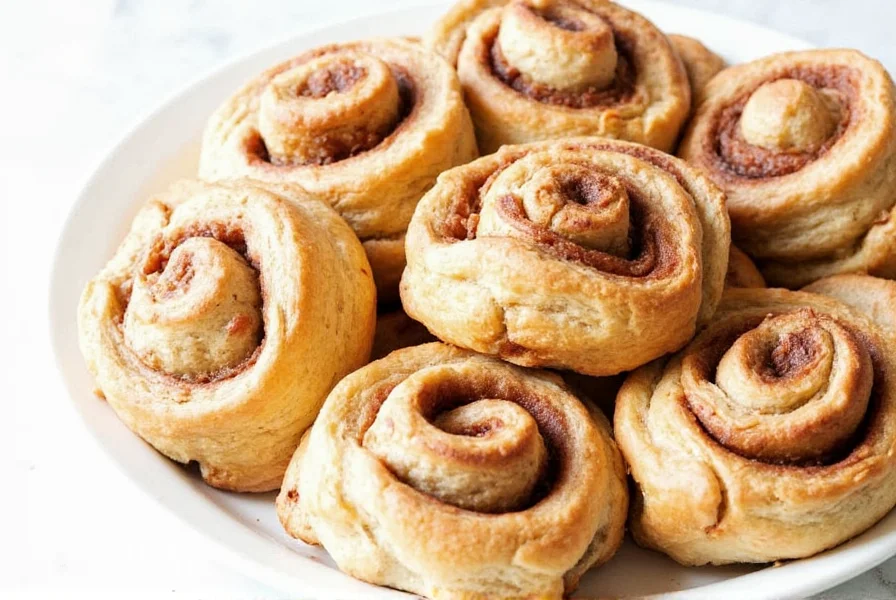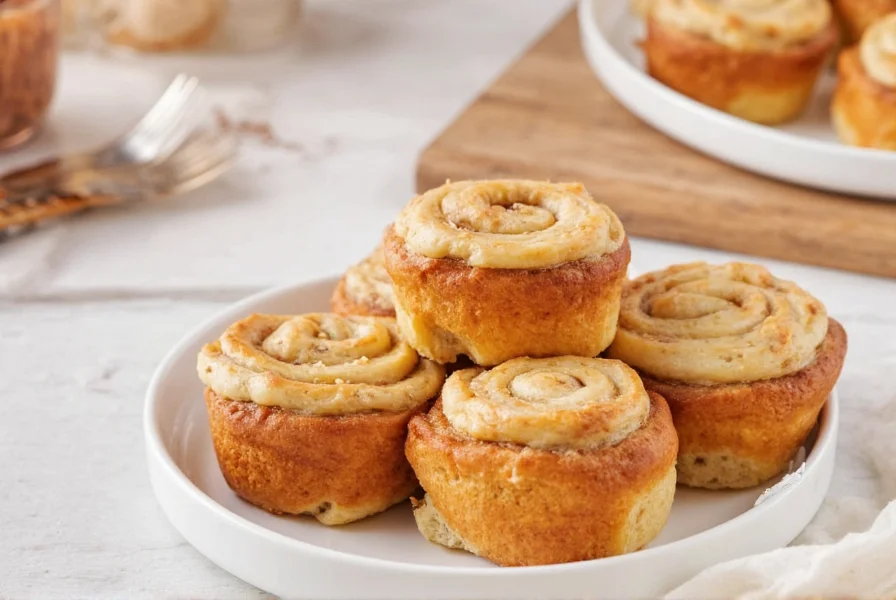For baking enthusiasts seeking to elevate their pastry game, chai cinnamon rolls represent the perfect marriage of two beloved comfort foods. Unlike standard cinnamon rolls that rely primarily on cinnamon and sugar, chai-infused versions incorporate the full spectrum of spices found in traditional Indian chai, creating a more complex flavor profile that appeals to sophisticated palates while remaining approachable for everyday baking.
The Science Behind Chai Spices in Yeast Dough
Understanding how chai spices interact with yeast dough is crucial for perfect results. Cardamom and cinnamon contain natural compounds that can inhibit yeast activity when used in excess. The ideal chai spice ratio for cinnamon rolls balances flavor impact without compromising dough rise. Professional bakers recommend using 1½ teaspoons of ground cardamom, 2 teaspoons of cinnamon, ½ teaspoon of ginger, ¼ teaspoon of cloves, and a pinch of black pepper per standard recipe (yielding 9 rolls).
Ground spices integrate more evenly than whole spices in dough, but freshly ground from whole pods provides superior flavor. For best results, always mix spices with dry ingredients first before adding liquids to ensure even distribution without creating spice pockets that could burn during baking.

Essential Ingredients for Authentic Flavor
The foundation of exceptional chai cinnamon rolls begins with quality ingredients. While traditional recipes call for basic pantry staples, the chai variation requires attention to spice quality and potential tea infusion methods:
| Ingredient | Traditional Cinnamon Rolls | Chai Cinnamon Rolls Variation |
|---|---|---|
| Spice Base | Cinnamon only | Cinnamon, cardamom, ginger, cloves, black pepper |
| Flavor Enhancer | Brown sugar | Brown sugar + black tea concentrate or chai extract |
| Fat Component | Butter | Butter + cardamom-infused butter |
| Liquid | Milk | Milk steeped with chai spices |
For the most authentic chai flavor without bitterness, steep whole spices in warm milk for 20 minutes before incorporating into the dough. This method extracts flavor compounds gently without introducing gritty spice particles. Alternatively, strong-brewed chai tea concentrate (reduced by half) can replace some liquid in the recipe.
Step-by-Step Preparation Guide
Creating perfect chai cinnamon rolls requires attention to temperature and timing at each stage:
- Dough preparation: Combine 3 cups flour, 2¼ tsp yeast, ¼ cup sugar, ½ tsp salt, chai spice blend, and any dry tea powder. Mix with 1 cup milk (steeped with spices and cooled to 110°F/43°C) and ¼ cup melted butter.
- Kneading: Knead 8-10 minutes until smooth and elastic. Chai spices can slightly inhibit gluten development, so proper kneading is essential for structure.
- First rise: Let dough rise in oiled bowl, covered, for 1-1.5 hours at 75-80°F (24-27°C) until doubled. Cooler temperatures extend rise time but develop better flavor.
- Filling: Mix ½ cup softened butter with ⅔ cup brown sugar, 2 tbsp chai spice blend, and 1 tbsp black tea concentrate. Spread evenly over rolled dough.
- Shaping: Roll tightly from long edge, pinch seam, and cut into 1.5-inch slices using dental floss for clean cuts.
- Second rise: Allow rolls to rise 30-45 minutes until puffy before baking at 350°F (175°C) for 22-25 minutes.
Troubleshooting Common Issues
Chai cinnamon rolls present unique challenges compared to traditional versions:
- Dense texture: Often caused by excessive spice inhibiting yeast. Reduce total spice to 1½ tsp per cup of flour and ensure yeast isn't in direct contact with spices.
- Bitter aftertaste: Results from over-extraction of spices. Steep spices no longer than 20 minutes and avoid boiling milk during infusion.
- Spice separation: Ground spices settling in filling can be prevented by mixing with melted butter before adding sugar.
- Uneven browning: Chai spices contain compounds that accelerate Maillard reaction. Reduce oven temperature by 25°F (15°C) if browning too quickly.

Variations for Different Dietary Needs
Adapting chai cinnamon rolls for special diets requires understanding how substitutions affect the delicate spice balance:
- Gluten-free chai cinnamon rolls: Use a quality 1:1 gluten-free flour blend with xanthan gum. Increase liquid by 2 tablespoons as GF flours absorb more moisture. Add ½ tsp apple cider vinegar to improve rise.
- Vegan version: Substitute butter with coconut oil and milk with oat milk. For authentic chai flavor, increase cardamom by ¼ tsp to compensate for reduced fat solubility of spices.
- Reduced sugar: Replace half the sugar with date paste. Note that this affects browning and texture—expect slightly denser rolls with deeper molasses notes.
Serving and Storage Recommendations
Chai cinnamon rolls deliver optimal flavor when served within 12 hours of baking. The volatile compounds in chai spices dissipate more quickly than cinnamon alone, making freshness particularly important. For best results:
- Warm rolls for 10-15 seconds in microwave before serving if not fresh from oven
- Pair with a light chai tea or vanilla latte to complement without overwhelming
- Store in airtight container at room temperature for up to 2 days (refrigeration accelerates staling)
- Freeze unbaked rolls on parchment-lined baking sheet, then transfer to freezer bags for up to 3 months
Frequently Asked Questions
Can I use chai tea bags instead of individual spices for chai cinnamon rolls?
Yes, you can use strong-brewed chai tea as liquid replacement in the dough. Steep 2-3 tea bags in 1 cup hot milk for 15 minutes, then cool to 110°F before using. However, for best flavor control, combining individual spices with a small amount of tea concentrate yields more balanced results.
Why do my chai cinnamon rolls taste bitter?
Bitterness typically comes from over-extracting spices or using too much clove/black pepper. Steep spices no longer than 20 minutes in warm (not boiling) milk, and maintain the recommended spice ratio: 2 parts cinnamon, 1.5 parts cardamom, 0.5 parts ginger, 0.25 parts cloves, and a pinch of black pepper.
How can I make chai cinnamon rolls without affecting the dough's rise?
To prevent spice interference with yeast activity, mix spices with dry ingredients first, then add to liquids. Keep total spice amount under 1½ teaspoons per cup of flour, and ensure your yeast isn't in direct contact with spices by dissolving it in warm liquid separately before combining.
What's the best way to store chai cinnamon rolls for maximum freshness?
Store at room temperature in an airtight container for up to 48 hours. Chai spices lose volatile compounds faster than cinnamon alone, so refrigeration isn't recommended as it accelerates staling. For longer storage, freeze unbaked rolls on a baking sheet, then transfer to freezer bags for up to 3 months.










 浙公网安备
33010002000092号
浙公网安备
33010002000092号 浙B2-20120091-4
浙B2-20120091-4